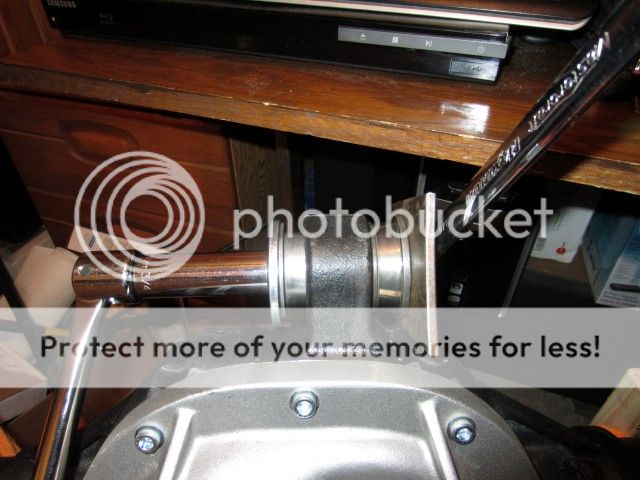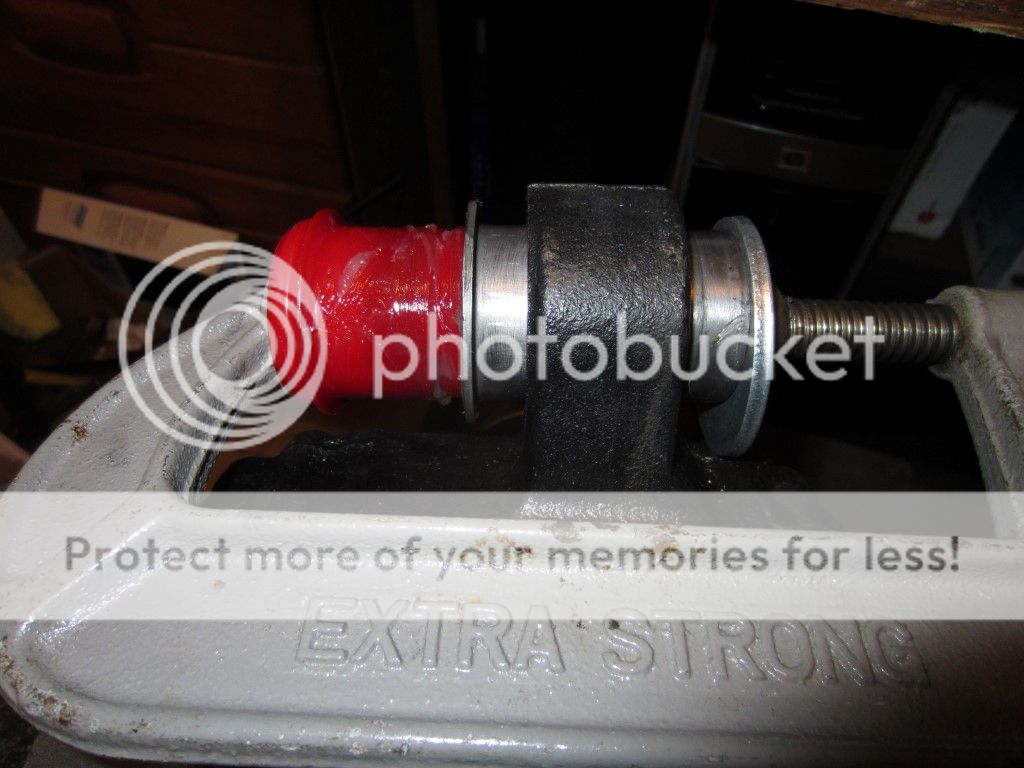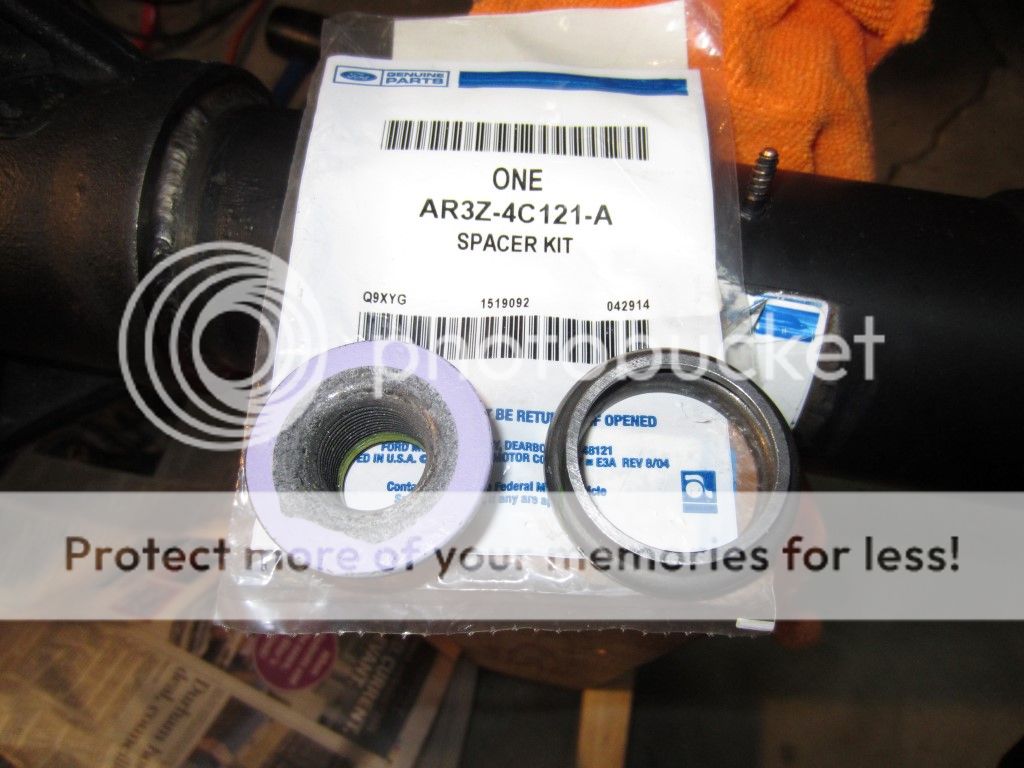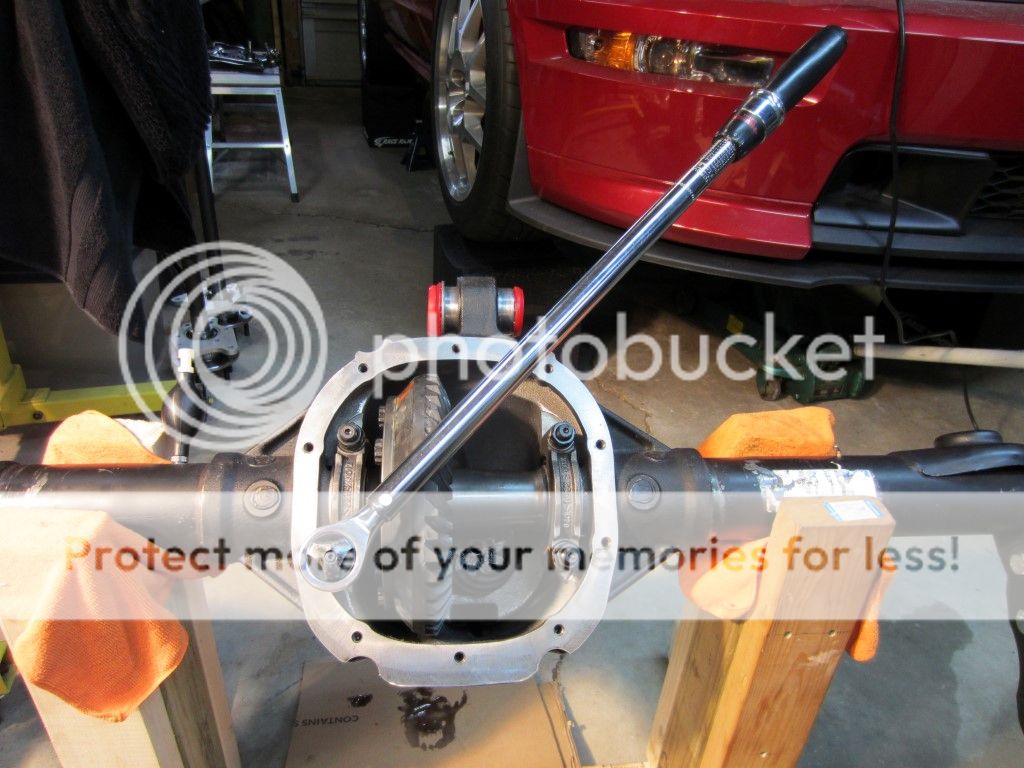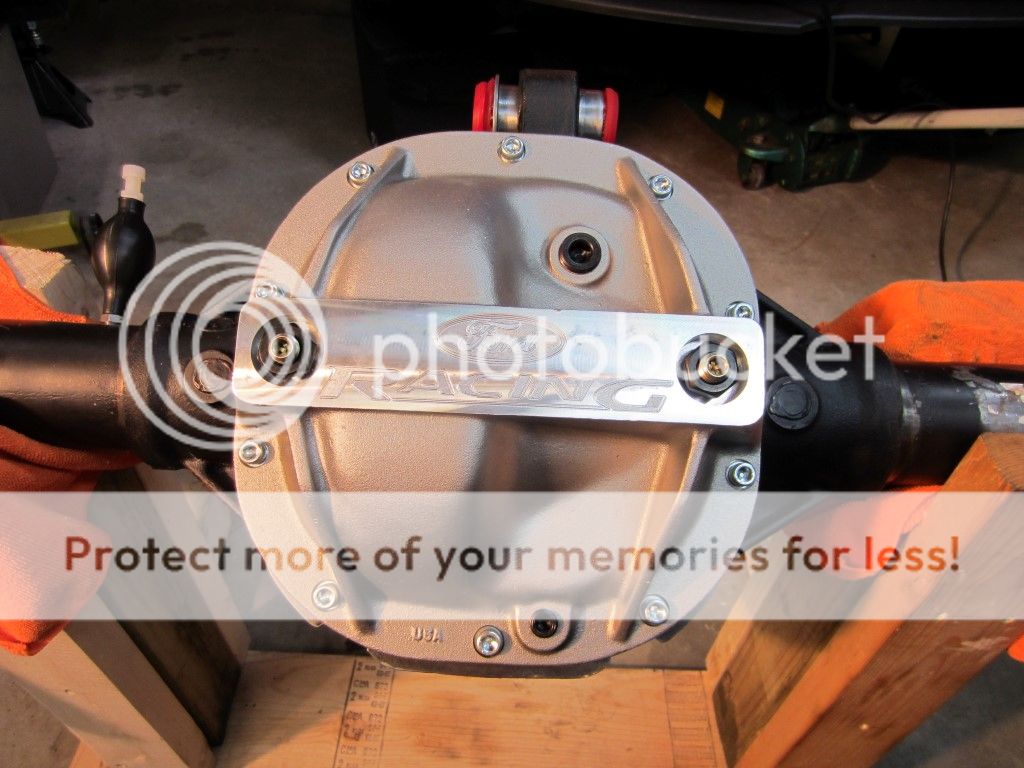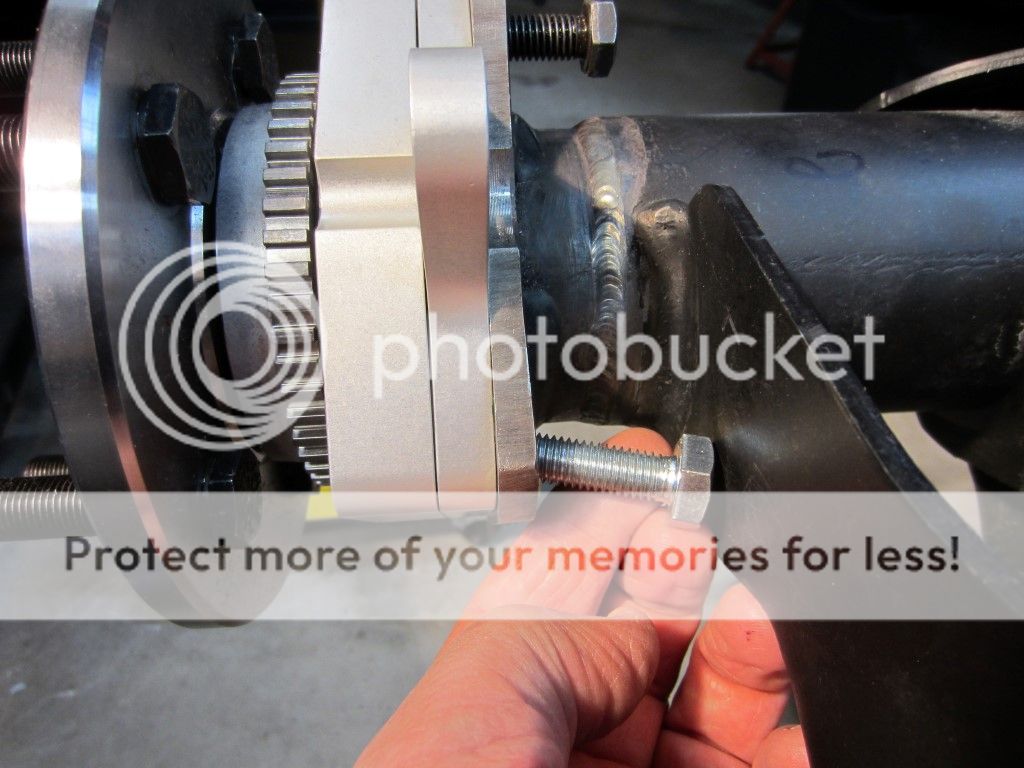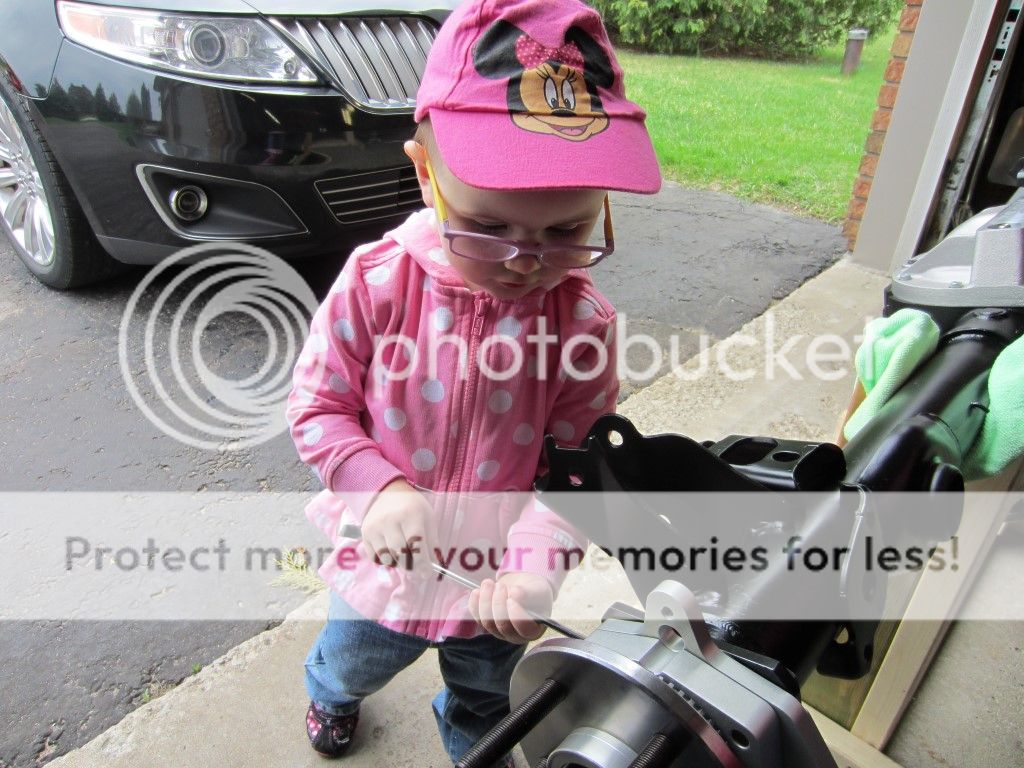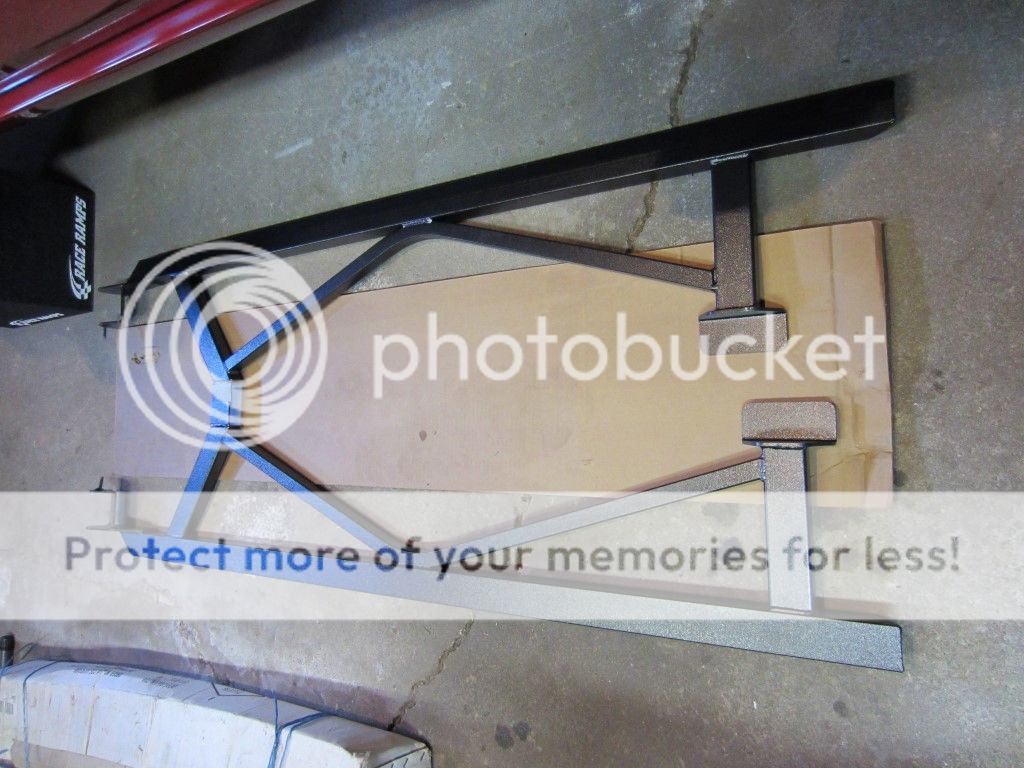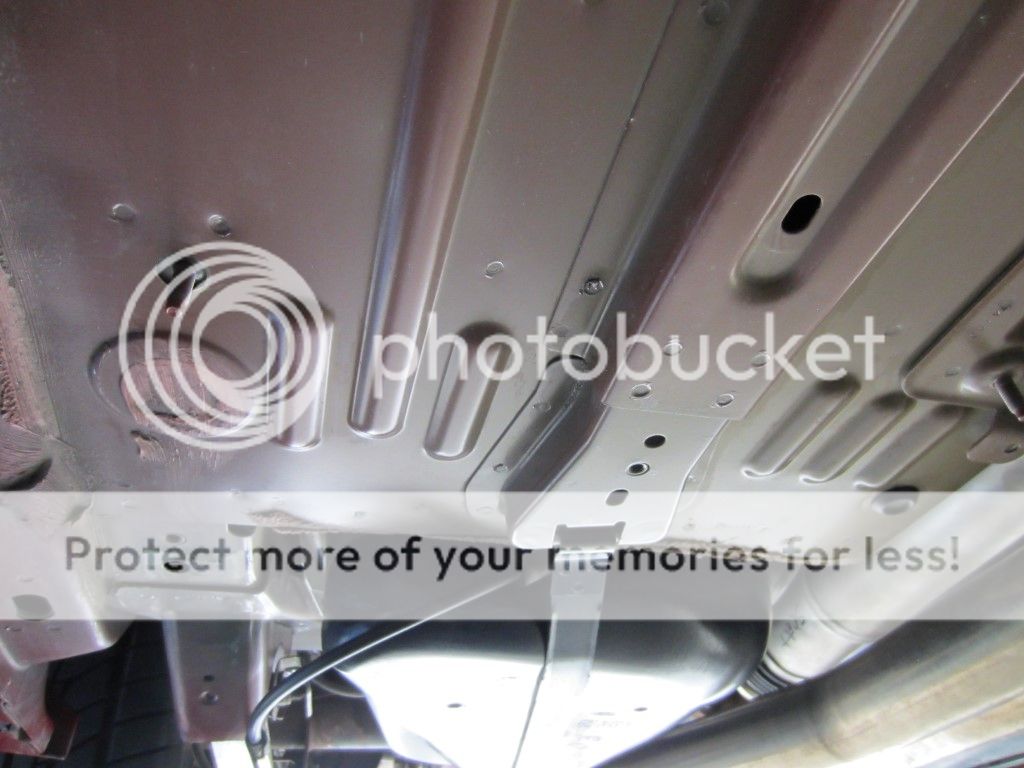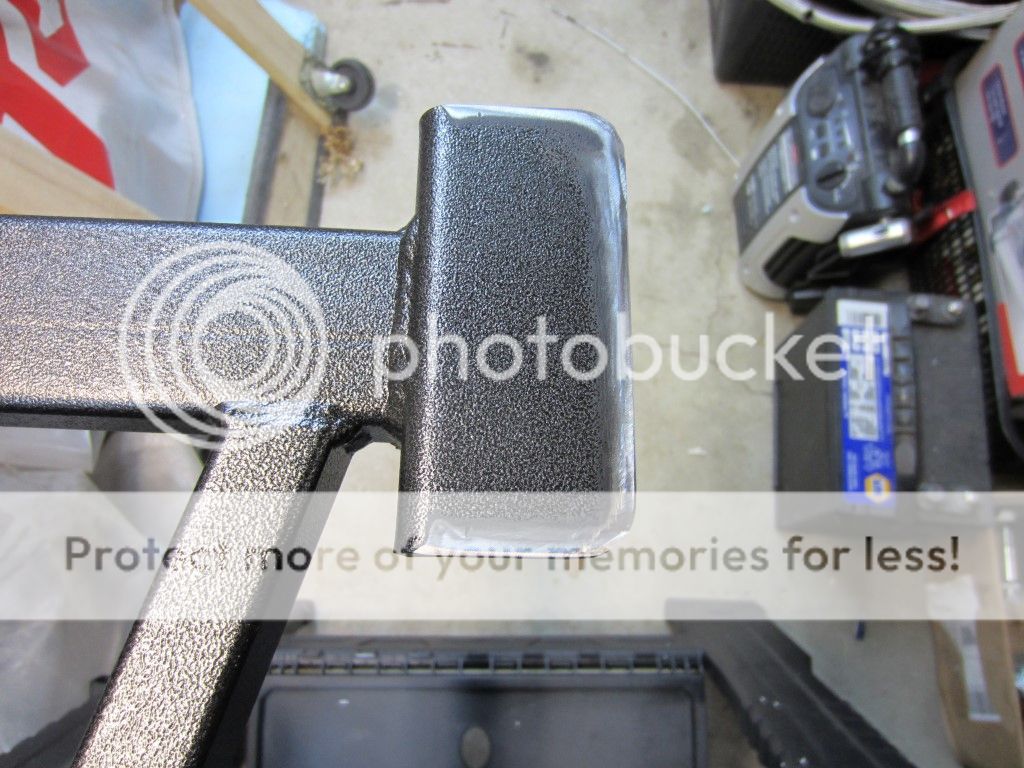Differential Finally Assembly, Well Almost!
Moved the differential from the laundry room back into the garage last weekend in preparation for final assembly.

Things were going very well until I ran into a little problem with the pinion bearing pre load (the amount of torque it takes to move the pinion gear). I set my target at 22 in-lbs right in the middle of what Ford recommends (16 – 28 in-lbs). Well in my trial install I ended up with 32 in-lbs and this time I was in the order of 50 in-lbs. It seems I just do not have the magic touch or intuition to know exactly when you are going from too loose to too tight when torqueing down on the pinion nut. Luckily I have one more AR3Z-4C121-A Purple Pinion Nut and Sleeve. If I screw this one up it is back to the dealership for me.
Progress so far. Removed the girdle.

Removed the nuts, studs and carrier caps.

Pulled the spool, ring gear bearing cups, and carrier shims out. Bagged the LH and RH shims for reassembly.

Removed the pinion nut with a 1-1/16” socket and my pinion flange tool. Removed the pinion flange with a 6” two jaw puller and a ¾” socket.

Removed the “trial slip-on” inner pinion bearing and the pinion shims.

I ended up with 2 shims to get the tooth pattern I was after. The shims measured 0.010” and 0.022” for a total of 0.032”.

Setup my 12 ton press to install a new inner pinion bearing.

And pressed the bearing on.

Added new crush sleeve.

Slipped the pinion into the housing, applied a little ARP Assembly Lubricant to the underside of the nut.

And a little Anti-Seize to the pinion flange splines.

Next the pinion nut was tightened using my pinion flange tool, a 1-1/16” socket and breaker bar with a pipe extension. Once the “wobble” was taken out I removed the pinion flange tool and checked the bearing preload. This was done after every pull on the breaker bar. But unfortunately as mentioned earlier I went from too loose to too tight in the last pull.
More to follow…..


